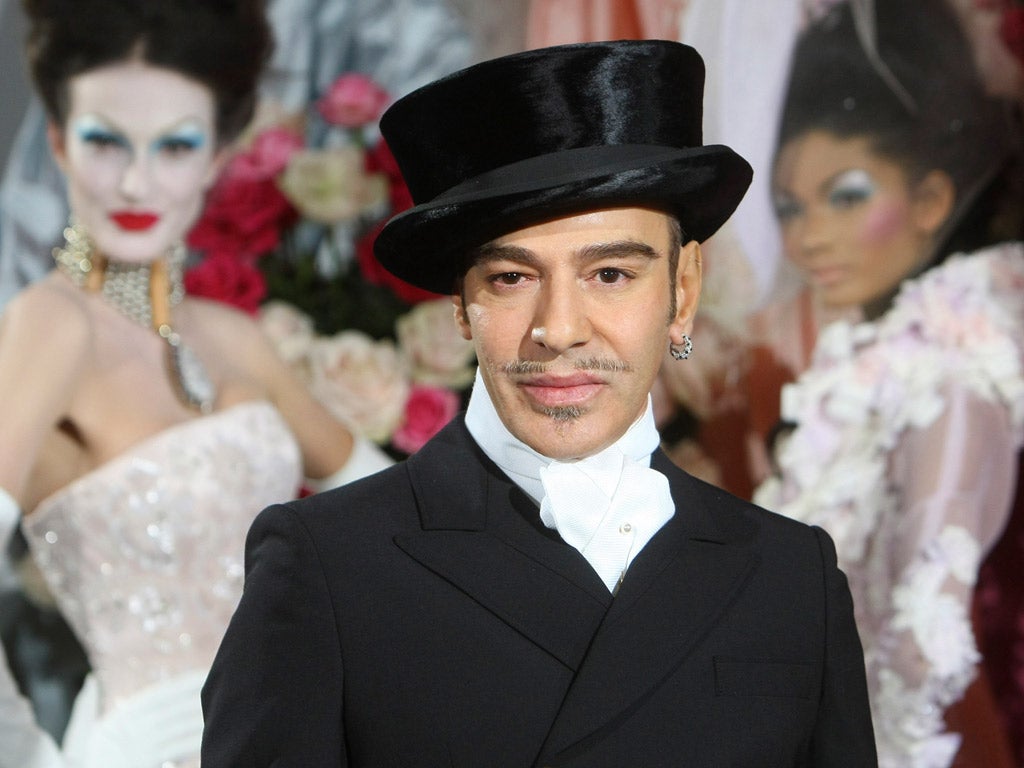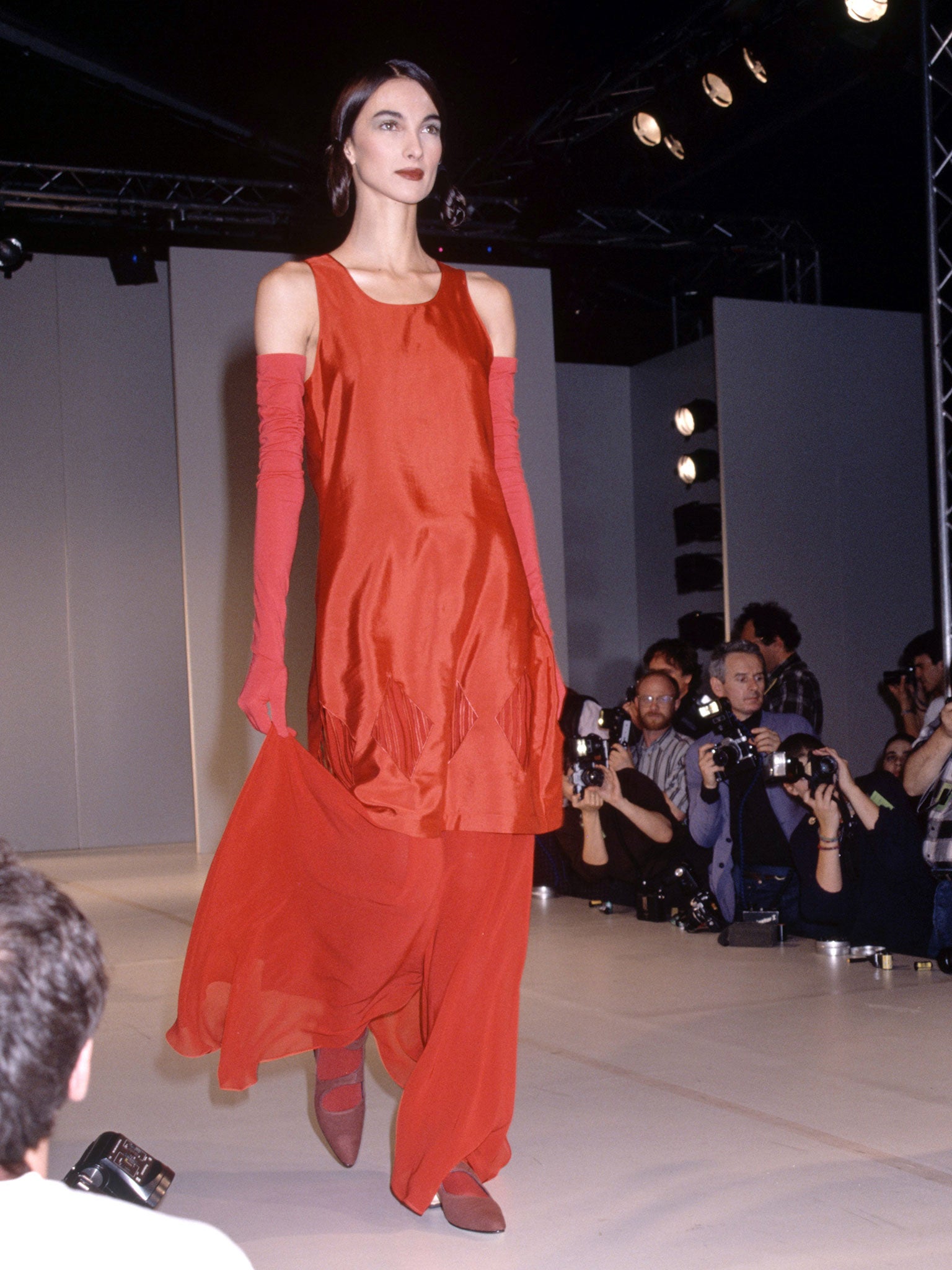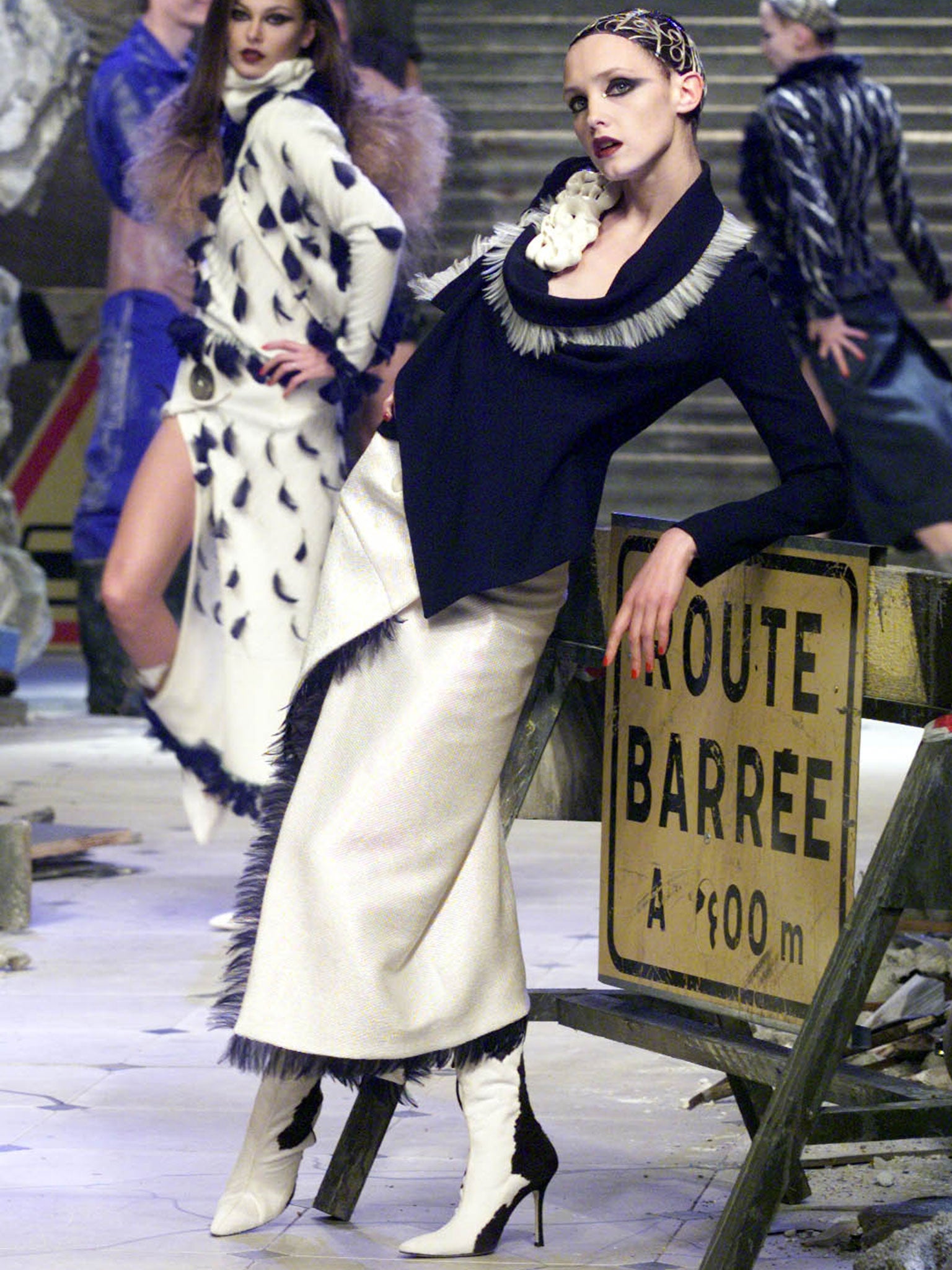The empire strikes back as ex-Dior designer John Galliano makes his return to fashion at Margiela
Maison Martin Margiela confirms the British designer as new creative director, to show his debut haute couture collection in January 2015

Your support helps us to tell the story
This election is still a dead heat, according to most polls. In a fight with such wafer-thin margins, we need reporters on the ground talking to the people Trump and Harris are courting. Your support allows us to keep sending journalists to the story.
The Independent is trusted by 27 million Americans from across the entire political spectrum every month. Unlike many other quality news outlets, we choose not to lock you out of our reporting and analysis with paywalls. But quality journalism must still be paid for.
Help us keep bring these critical stories to light. Your support makes all the difference.
It was officially announced today, after months of swirling speculation, that John Galliano, 53, the British designer who formerly headed an eponymous label and the house of Christian Dior, has been appointed creative director of Maison Martin Margiela.
Renzo Rosso, president of OTB – Only The Brave, the £1.25bn holding company which owns Margiela as well as brands such as Viktor and Rolf, Marni and denim behemoth Diesel – is quoted in Womenswear Daily stating “Margiela is ready for a new charismatic creative soul… John Galliano is one of the greatest, undisputed talents of all time — a unique, exceptional couturier for a maison that always challenged and innovated the world of fashion.”
The above are both undoubtedly true. But Galliano’s three decades of creation have been rocky, including penury, bankruptcy and much controversy. The latter, of course, includes his dismissal in 2011 from his roles at his own label and Dior following a drunken anti-Semitic outburst in a Paris bar.
He was later convicted and received a suspended fine from a French court. Galliano has repeatedly expressed his remorse for the incident – including a much-publicised interview in Vanity Fair in 2013, following a period spent at a rehabilitation centre for drug and alcohol addiction in Arizona. He also took instruction with Abraham Foxman of the Anti-Defamation League during his recovery period, whilst admitting in an October 2013 interview with US talk-show host Charlie Rose that he continued to battle his demons, and will do so all his life.
That was the spectacular crashing down of a designer whose star was previously one of the brightest in the fashion firmament. After a string of critically-acclaimed shows and a clutch of awards, in 1995 he was appointed to the house of Givenchy, part of the LVMH group who also took 91% ownership in his fledgling John Galliano label. At that point, he was the first Englishman since the 1940s to run a French haute couture house. In 1996, he was appointed to Dior, where he designed until 2011.

The Margiela label, on paper, could not be more different than either Galliano or Dior. Famed for its blank labels – the four stitches affixing the corners, visible on the exterior, the only sign of overt branding – the label has for years spoken collectively as “we,” eschewing the idea of the singular superstar designer. Galliano, of course, took this to new heights with carefully choreographed catwalk bows, while Monsieur Dior appeared on the cover of Time magazine in 1957 – the first couturier to do so.
Add to that the aesthetic contrasts – Galliano and Dior both favouring exoticism and romanticism, grand ball gowns and couture flourishes, versus Margiela’s championing of “deconstruction.” Deconstruction entails clothes that have been somewhat unravelled, undone. Early Margiela collections used second-hand fabrics, creating sweaters from old army socks or an evening dress from the lining of a more precious gown, complete with exposed seams and hand-frayed hem. The approach was highly conceptual: one memorable collection featured precise adult-sized recreations of doll’s clothing, retaining the enormous proportions of snaps, zippers and thick stitching. Another featured garments distorted by specific proportions – a dress may be “enlarged” 100% horizontally, a pair of jeans blown up by 200%.

How to reconcile the two? A fixation on history, on memory in dress. Plus, more obvious parallels. One of the hallmarks of the Galliano label was a newspaper print – a fusion of low and high that finds a reflection in Margiela’s reclamation of the rejected. His 1980s work shown on the London catwalk, rawer than his couture-influenced Paris collections with sweaters and jackets worn as skirts, clothes turned upside-down, misbuttoned and topsy-turvy, is also close in spirit to Margiela, while there are flashes of deconstruction in his Parisian clothing also. In a South Bank Show documentary from 1996, documenting his year designing for Givenchy and his rise to Dior, the milliner Stephen Jones, who worked regularly with Galliano from the early nineties onwards, recalls him and his then-design associate Bill Gaytten (now creative director of the Galliano label) throwing glasses of red wine at a model to devise a print.
There were other reflections: Galliano’s controversial spring/summer 2000 Dior haute couture “Homeless” collection, for instance, had roots in Margiela’s deconstruction. Of that collection, Galliano stated: “I wanted to turn couture on its head.”
That is exactly what this appointment does – not least for the Margiela label, which has floundered since its founder left the label in 2008 after a riotous 20th anniversary show. A variety of consultants and stylists have been brought in to inject the label with magic: generally, one season shots which have never quite given the label the kick required. Margiela’s ready-to-wear especially has become a pastiche of itself. The only concept recently has been the concept of trying to be conceptual. It hasn’t worked well.
Taking the reins chez Margiela is a hefty undertaking – comprising men’s and women’s ready-to-wear, accessories, fine and costume jewellery, a secondary line MM6 (all Margiela lines are denoted by numbers, bar the main womenswear collection) and an “Artisanal” line presented during Paris haute couture week. The latter is when Galliano is set to make his debut, in January.
Renzo Rosso has long expressed his admiration for John Galliano’s talent. Whilst denying rumours of the Margiela appointment in Paris last week, he stated” Who wouldn’t like to work with [John Galliano]? If he ever got back his name, I would be the first to produce his collections.” The Only The Brave company has also manufactured the John Galliano children’s line since 2008.
“I look forward to his return to create that fashion dream that only he can create,” says Renzo Rosso. “And wish him to here find his new home.” Words echoed across much of the fashion fraternity, who responded to the news with a frenzy of well-wishes. Galliano has made moves towards returning to the industry before: in 2013, he completed a much-publicised three-week period as “designer-in-residence” at Oscar de la Renta, for their winter collection of that year, and in May this year was appointed Creative Director of Russian perfumery firm L'Etoile, working with fashion photographers, stylists and hair and make-up specialists to devise imagery for the company.
That indicates the willingness of the fashion world to embrace Galliano’s undisputed talent, following the considerable remorse he has expressed for his actions. His name has been rumoured in connection with a number of positions in the industry, including a permanent role at de la Renta, the recently vacated position of creative director of Nina Ricci, and potentially a position at the London-based label Mulberry.
“Does addiction exonerate?” was a question I posed when that 2013 Vanity Fair interview came out. “No, but it does help explain… In legalese, addiction can be considered a ‘mitigating circumstance’. It doesn’t absolve you of responsibility, but it can reduce the penalty.” Hence the fact I welcome Galliano’s return to fashion after his remorse, his repentance, and three years of rebuilding both his life and shattered career. Moreover, I welcome him back because he’s a remarkable talent, whose career back-catalogue – celebrating all cultures and ethnicities without prejudice - is the greatest riposte to his drunken tirade. That legacy should not be erased. And everyone, including John Galliano, deserves a second chance.
Join our commenting forum
Join thought-provoking conversations, follow other Independent readers and see their replies
Comments